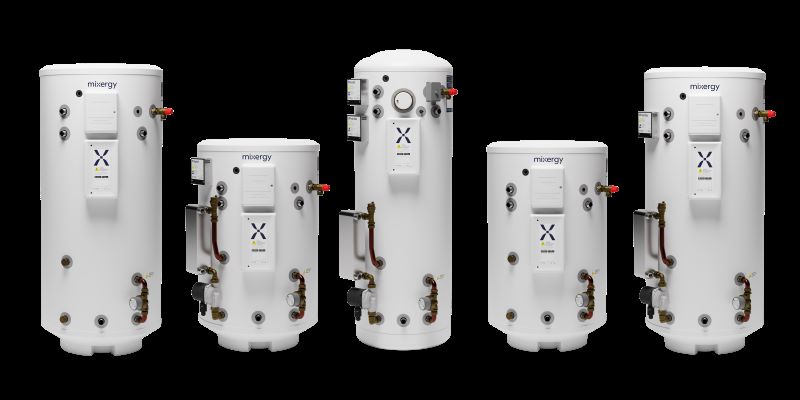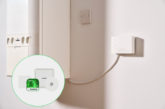
Mixergy reveals the role of thermal stratification in how the Mixergy cylinder works.
Unlike most cylinders that heat water from the bottom up using coils or an immersion heater at the bottom of the cylinder, Mixergy cylinders use thermal stratification to make storing hot water more energy efficient.
Simply put, thermal stratification is the result of heat rising; hot air rises above cooler air and hot water floats on top of cooler water. The area between the hot and cold sections of water is known as the thermocline.
The Mixergy cylinder starts by heating a small volume of water at the top of the cylinder, either with an immersion heater or a coil at the top of the cylinder and then growing that volume of hot water downwards.
A sensor in the cylinder lets the user know exactly how much hot water is available. Using thermal stratification and smart technology, only the required amount of water is heated, reducing heat losses, and the water gets to a useful temperature quicker. This means it is 21% more efficient than traditional cylinders when operating with a standard gas system boiler, as validated by the Energy Saving Trust.
Smart control
The Mixergy cylinder needs to be connected to the internet and the app downloaded to allow full control of the system. When the cylinder is connected, a blue connectivity light shows on the gauge. The cylinder must be registered and connected online to validate the manufacturer’s 25 year warranty.
Once an account has been set up and verified on the app, there are lots of useful features. The app will tell users how much hot water is in the cylinder, what the temperature is, what it is costing and how much space is left. Users can use the app to boost it to provide 100% hot water and change the temperature. There’s a daily schedule to ensure hot water is available when needed, and also a holiday mode, for setting departure and return dates and the temperature required while away.
Frost protection
Important for the winter months, the cylinders have built-in frost protection. This is especially important when installed in an unheated loft or garage. The cylinder’s smart technology continually monitors the internal temperature, and if the water at the bottom of the cylinder drops below 5°C, it will automatically heat up the water to prevent freezing. This gives peace of mind for the end user, knowing that their hot water and heating system is protected from freezing, even when they are away from home.
Home automation
The Mixergy cylinder can be integrated into existing home automation systems, for example it can be controlled using Amazon Alexa, Google Home and Hive from British Gas.
As more flexible electricity tariffs become available thermal stratification means there’s more space in the smart cylinder to take advantage of economical hot water. By either using an API straight into the energy provider or putting the details manually into the app, the cylinder can be programmed to only work with the electricity is at its cheapest. This also works for homes with solar PV. A solar diverter can be retrofitted to the cylinder, heating water for free, when the sun is shining.
For installers, the benefit of the Mixergy app over a programmable heating and hot water control is that you don’t need a dual twin channel programmer, you just need a single channel programmer for the heating, and the hot water is controlled via the Mixergy app.
Heat pump ready
When the Mixergy cylinder is installed in conjunction with a heat pump, an external plate heat exchanger is fitted to the heat pump flow and return. The heat energy is taken from the system loop via one side of the plate heat exchanger, whilst pulling cold water from the bottom of the cylinder through the other side of the plate heat exchanger. The advantage of this is that energy is always transferred from the coldest part of the cylinder and forced convection occurs on both sides of the heat transfer surface, achieving a low thermal resistance and the best possible COP.
This overcomes the problem of coil lock-out, which occurs in standard cylinders when about half of the cylinder coil is in hot water. This is because heat energy moves less easily through the hotter part of the coil because the temperature of the water in that area of the cylinder is already high. As the heat pump tries to heat the water in this partially heated state, the system loop temperature has to increase, reducing the overall COP of the system.













